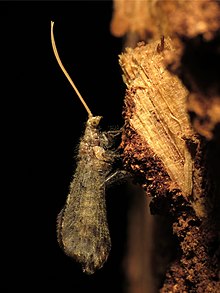
Megaloptera is an order of insects. It contains the alderflies, dobsonflies and fishflies, and there are about 300 known species.
In the 10th edition of Systema Naturae, Carl Linnaeus classified the arthropods, including insects, arachnids and crustaceans, among his class "Insecta". Insects with net-veined wings were brought together under the name Neuroptera.

Sympherobius is a genus of brown lacewings in the family Hemerobiidae. There are at least 50 described species in Sympherobius.

Glenurus luniger is a species of antlion in the family Myrmeleontidae. It is found in Central America and North America.
Lomamyia longicollis is a species of beaded lacewing in the family Berothidae. It is found in North America.
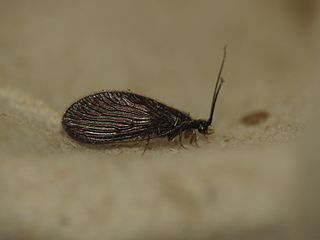
Sisyra is a genus of lacewings in the family Sisyridae. There are at least 8 described species in Sisyra.
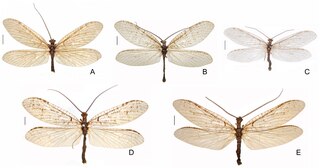
Neohermes is a genus of fishflies in the family Corydalidae. There are about 5 described species in Neohermes.
Eremochrysa pallida is a species of green lacewing in the family Chrysopidae. It is found in North America.
Eremochrysa is a genus of shadow lacewings in the family Chrysopidae. There are about 18 described species in Eremochrysa.
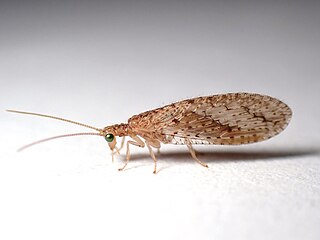
Micromus tasmaniae, known as the Tasmanian brown lacewing, is a species of brown lacewing in the family Hemerobiidae. It is widespread in Australia, New Zealand, and Pacific Islands such as New Caledonia and Vanuatu.

Glenurus is a genus of antlions in the family Myrmeleontidae and typical of the tribe Glenurini. There are about 12 described species in Glenurus.

Negha is a genus of square-headed snakeflies in the family Inocelliidae. There are at least three described species in Negha.

Hemerobius humulinus is a species of brown lacewing in the family Hemerobiidae. It is found in Europe and Northern Asia, North America, and Southern Asia.

Hemerobiinae is a subfamily of brown lacewings in the family Hemerobiidae. There are about 5 genera and at least 60 described species in Hemerobiinae.
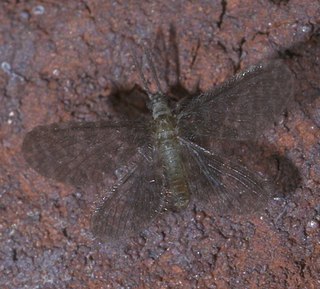
Nallachius is a genus of pleasing lacewings in the family Dilaridae. There are more than 20 described species in Nallachius.

Protochauliodes is a genus of fishflies in the family Corydalidae. There are about 13 described species in Protochauliodes.

Brachynemurus is a genus of antlions in the family Myrmeleontidae. There are at least 20 described species in Brachynemurus.
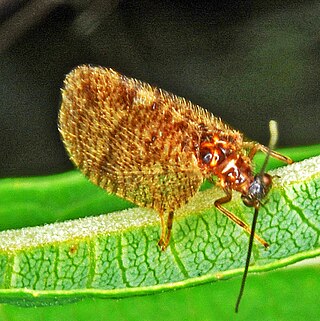
Megalomus is a genus of brown lacewings in the family Hemerobiidae. There are more than 40 described species in Megalomus.

Psectra is a genus of brown lacewings in the family Hemerobiidae. There are more than 20 described species in Psectra.
Megalomus carpenteri is a species of brown lacewing in the family Hemerobiidae. It is found in North America. The specific epithet carpenteri honors paleoentomologist Frank M. Carpenter for his taxonomic work on the Neuroptera.
